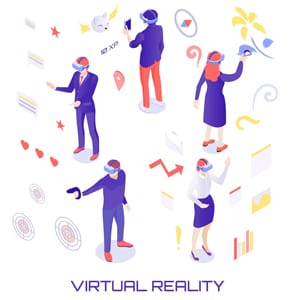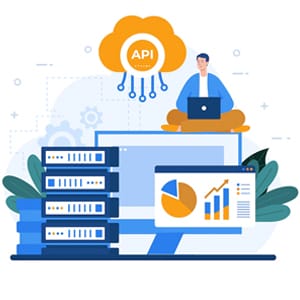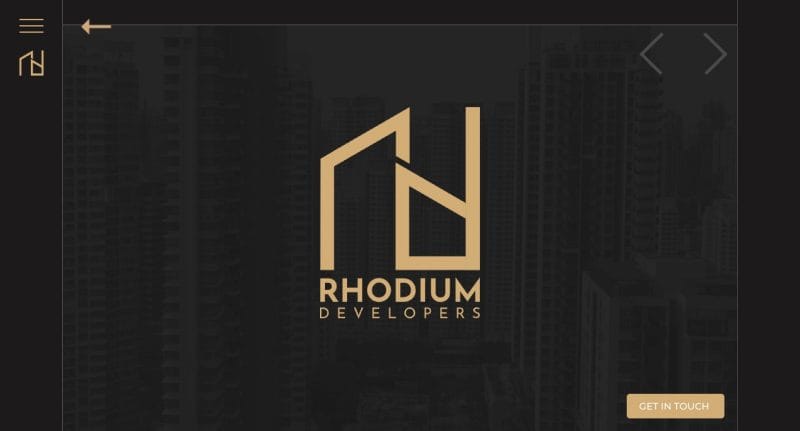The web is an ever-evolving entity and the future of web development is an ever-changing landscape. With new technologies being introduced every day, it's more important than ever to stay up to date with current trends to make sure that you are staying ahead of the curve. Web developers must be knowledgeable in both existing and emerging technologies to ensure they can provide the most value for their projects.
The future of web development is a topic of much debate and speculation within the tech industry. As technology rapidly evolves, many theories are circulating online regarding the future of web development. This article will discuss the future of web development, exploring how technology advancements are helping shape the future of this vital industry and how developers can take advantage of them.
Web Design & Web Development

Web design and web development are two key components that have been essential in the successful creation of websites. Web designing and web development have been around for decades with no signs of slowing down. As more companies are moving to digital platforms, the importance of web design and web development will definitely increase.
That means in the coming years, web design and web development will continue to be integral components of the growing business. For that, the developers must stay ahead of progress by staying up-to-date on the latest trends and technologies to remain competitive in this space.
Organizations around the world have been increasingly investing in software engineering to create user-friendly, attractive interfaces that can respond flexibly to customers' needs. Web developers are expected to be more involved with front-end development than ever before. They'll need to focus on creating responsive designs that work across multiple devices and platforms as well as leveraging technologies like HTML5 and CSS3. Responsive design will continue to take precedence over static design as more companies strive to ensure their sites are accessible across all devices with minimal effort from the users' end.
All About AI

The future of web development may be uncertain, yet one thing is certain: Artificial Intelligence (AI) will play a major role. Artificial Intelligence (AI) and Machine Learning (ML) are set to remodel the creation and management of websites in the coming years. With the expansion of web technologies, AI plays a major role in automation and optimization, allowing the creation of more efficient and robust websites with limited time and resources.
In addition, AI-powered systems can help web developers automate simple tasks such as code testing and deployment, freeing resources & time for other projects and focusing on creative endeavors. Also, these systems can offer intelligent insights into website performance based on analytics data that could help improve website design and functionality. Finally, with the rise of chatbots, AI also promises to make customer services easier for businesses by automating interactions with customers.
AI-based technologies such as natural language processing (NLP), computer vision, and speech recognition can be used to create a more interactive user experience on websites.
AR & VR Technology

As web technology continues to advance, web developers can look forward to integrating augmented reality (AR) and virtual reality (VR) into their work. This will open up completely new opportunities for projects that were impossible previously. Developers can use AR/VR technology to create engaging websites which can provide an unprecedented level of interactivity for both businesses and consumers alike.
The possibilities of AR and VR in web development are endless; from providing detailed product visuals on eCommerce sites to creating lifelike virtual environments for online gaming or simulations. Enabling users to interact with 3D rendering in real time will allow developers to create immersive experiences with elements such as sound, touch, and motion that are not possible on traditional web platforms. AR & VR applications could transform web development by providing enhanced user engagement while also simplifying complex data visualization tasks.
AR & VR technology have already begun to transform the way, web developers design interactive experiences for users. The ability to mix real-world elements with virtual objects allows developers to create unique immersive environments that can be customized specifically for individual needs. Additionally, AR & VR allow for more intuitive user interfaces which are easier for new users to understand quickly. This technology also has tremendous potential for marketing purposes as well.
Web 3.0 and Blockchain

The digital revolution has brought about a drastic transformation in the realm of web development. With the coming of Web 3.0 and blockchain, developers have been presented with even more possibilities to create innovative and groundbreaking online experiences. Web 3.0 will bring with it faster data transfer speeds, more secure connections between sites, and an increased focus on personalization features for users.
Web 3.0 is based on an architecture of decentralized applications (dApps), which are built on top of a platform that uses distributed ledger technology such as blockchain. This allows for secure data transmission and eliminates the need for third-party services, resulting in improved efficiency and trustworthiness. Additionally, dApps are typically open source, allowing developers to build upon existing projects without worrying about copyright issues or licensing fees.
Blockchain also provides a platform for smart contracts that can be used to automate certain processes within web development projects. This adds an extra layer of security and transparency, ensuring that all actions taken by users are legitimate and reliable. This technology allows for improved tracking of digital assets such as cryptocurrency or contracts stored across multiple computer systems in a distributed manner rather than relying on one centralized system as traditional methods do.
APIs, Open Web, and Cross-Platform Apps

The future of web development looks brighter than ever with the emergence of APIs or application programming interfaces. API allows different computer programs to interact and share data without any human intervention. This can be extremely useful in web development as it enables developers to reduce manual coding and automate certain processes such as authentication or payment processing.
Open web technologies such as HTML5, CSS3, and JavaScript provide developers with more control over how content is displayed, allowing for a better user experience across platforms and devices. These tools give a developer more flexibility when creating websites that are optimized for mobile use. Plus, API helps to increase the accessibility and flexibility of open web technology.
Cross-platform app development has become a popular choice for many businesses as they are much easier to develop due to the use of open-source frameworks such as React or Flutter. Also, their maintenance cost is much lower than native apps as a single codebase can be used across all platforms. Cross-platform applications provide better performance than native apps due to optimizations available in modern frameworks and tool sets.
Conclusion
The future of web development is up for debate. It's going to stay somewhat the same but new technologies and trends will alter the way websites are created, managed, and maintained. Recent advancements have made creating a website quicker than ever before from templates to drag-and-drop design tools that allow individuals with no coding experience to build their own websites. Web developers will now have more opportunities than ever before as they can focus on developing unique experiences for users based on emerging technologies.
Web developers will also continue to use their skills in SEO optimization and performance optimization to ensure that websites are user-friendly and perform well across all devices and browsers.










